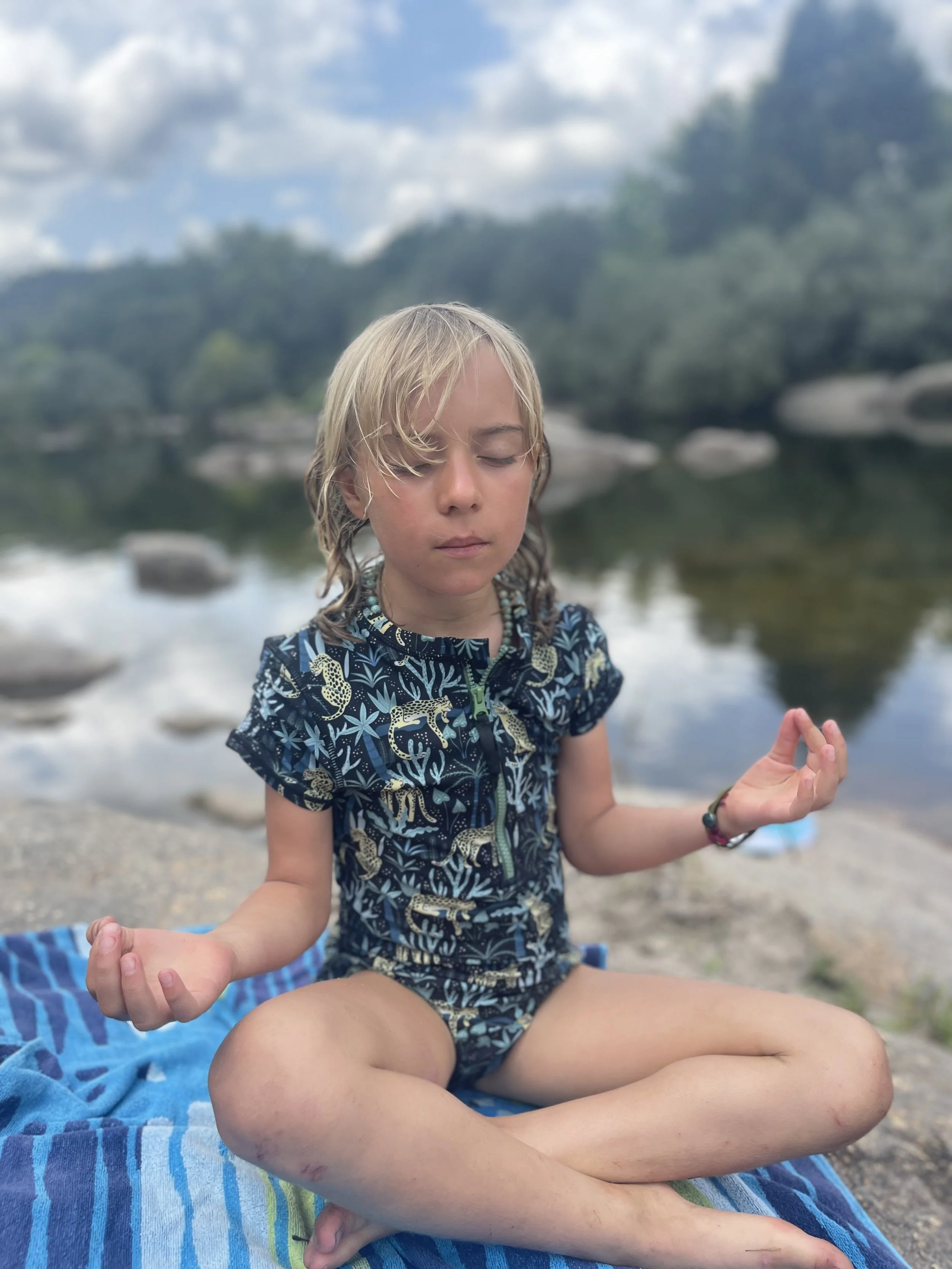Boundary Setting
Many interpersonal issues stem from boundary challenges… either we give too much and can’t say no. Or we are too rigid and can’t say yes. Okay, I’m exaggerating a bit. Developing strong boundaries is a vital skill that many of us fail to learn. We need to explore our inner world to be effective in the outer world. We need to connect with our inner compass which guides us toward living with integrity.
Our integrity lies in understanding how our behaviors in the outer world align with our inner values. Boundaries act as the bridge between these two worlds, defining the limits we set for ourselves and others to ensure consistency and harmony. They are the limits we place on ourselves and others so the two worlds match.
Like the peel of an orange (this brilliant analogy is created by Terry Real), boundaries have two aspects - containment and protection. The part that keeps us safe and the part that keeps the world safe from us. Both are crucial.
The Containment/Outer Boundary (Outer Peel):
These boundaries protect the world from us.
They prevent us from saying or doing things we may regret later.
They prevent us from being defensive.
This part of the boundary protects the world from us. It stops us from being offensive and saying or doing things that should stay contained. Containment boundaries are crucial in romantic relationships because they help partners regulate the negative reactivity (anger, contempt, righteousness, etc.) that compromises their closeness. The containment dimension of these boundaries is a necessary requirement for closeness because without exercising restraint, intimate partners are at risk of imposing themselves and being invasive with one another.
The Protective/Inner Boundary (White Pith):
These boundaries protect us from the world.
They prevent us from “overreacting” or being “wounded” by others' thoughts or feelings.
Prevents us from taking responsibility for other people’s thoughts or feelings or blaming them for ours.
The white pith of the rind contains, shields, and prevents us from leaking all over the world. Our core sense of self remains intact.
Our internal boundary is like our skin is to our body. It's where we end and the world begins. A functioning inner boundary leaves us protected and connected at the same time. We're sifting through what's coming at us asking, "Is this true or not true?" If it's true, we relax our boundaries and take it in. If it's not true, we keep it out. (We have the perspective to see it is about them, and it's not about us).
Protective boundaries help partners shield themselves from the negative impingements (demands, reprisals, shaming, etc.) that undermine their autonomy in the relationship.
If we are boundaryless and thin-skinned, we take in everything that’s said to us. We are boundaryless, there's no protection. We're connected but not protected. We are thin-skinned. Our skin is too porous.
If we are walled off, we are protected but not connected. We're not listening. We're not sifting through what's being thrown at us. We're not taking it in at all. We are thick-skinned.
Sometimes we aren't even sure where to draw the line, when one has been crossed, or even how to communicate our boundaries to others.
Setting Boundaries: Practical Tips
Know your personal limits - You can't expect others to know your boundaries if you aren't aware of them yourself.
Check in with your gut or intuition: How do specific situations or people make you feel?
Pay Attention to Your Emotions: Notice how you feel in different situations. If you feel uncomfortable, anxious, frustrated, angry, resentful, and in general discomfort, these can be signs that your boundaries are being crossed.
Identify Your Values: Identify the values that are important to you. Your boundaries are often related to your values, and knowing them can help you to establish and enforce your boundaries.
Listen to Your Body: Pay attention to physical sensations in your body, such as tension or discomfort. These physical cues can help you to recognize when your boundaries have been crossed.
Consider Your Needs: Identify your personal needs, both physical and emotional. Setting boundaries is about taking care of yourself and meeting your own needs.
Reflect on Past Experiences: Think about past experiences where your boundaries were crossed or violated. Reflect on what happened and how it made you feel, and use these insights to set clearer boundaries in the future.
Understand that guilt may arise and that's ok.
Exercising boundaries is going to challenge you, and push you to do better: none of that will be possible if you don't think that you are deserving and worthy of respect - from yourself or from anyone else.
REMEMBER: Others will handle your boundaries however they will handle them, that is about them, not you.
Journal Prompts for boundary setting:
"I will no longer let people…
“I deserve…
"I need to____________________________to protect my energy."
Here’s an exercise that Terry Real teaches:
Close your eyes and imagine a special place where you feel relaxed, happy, and comfortable. Now go there in your mind’s eye. Feel what it's like to be there. Feel the air, smell the smell, hear the sound, feel the good feeling of being in that special place. Now, hold onto the good feelings of relaxation and pleasure, and come back to the room. Encircle yourself with, a barrier, something like a glass dome. It’s impermeable and see-through. You can see out of it, and you're completely protected. You now have boundaries. Keeping your eyes closed, stay inside of it. This is what I want you to feel. Your boundary is impenetrable and you are protected. Nothing gets in unless you choose to soften your boundary and take it in. All you have to do is remember to put this shield up. Once it's up, it will protect you. Keep that boundary around you.
Practice Healthy Boundaries in Relationships:
Protective boundary (outer skin). When your partner says something negative or critical.
Ask yourself:
1. Is it true?
2. Do I trust this person right now?
If there’s truth in it and you trust this person, let it in. Let yourself feel it. If not, don’t. You’re protected behind your boundary.
Containment boundary (inner skin). When you’re about to say something negative or critical.
Ask yourself:
1. How is this person going to receive this?
2. Is this the right time to bring this up?
Think before you speak.
Always listen for that alarm bell inside that tells you that someone has stepped one foot over your “do not cross” line. The sooner you catch this, the easier it is to kindly show them the boundary. If someone is halfway across your lawn, it is a lot trickier to get them to move back.
Are you looking for help with your relationship? Do you feel that a relationship coach could help you working on your couples skills? Is communication an issue? Have you ever considered couples therapy or counseling? As a psychotherapist and relationship coach, I am uniquely positioned to help you through these moments of disconnect and conflict.
__
Learn more about my approach to life consulting and relationship coaching here or get in touch for your free 30-minute consultation here! Don’t forget to follow along @LilyManne on social for more regular updates!


